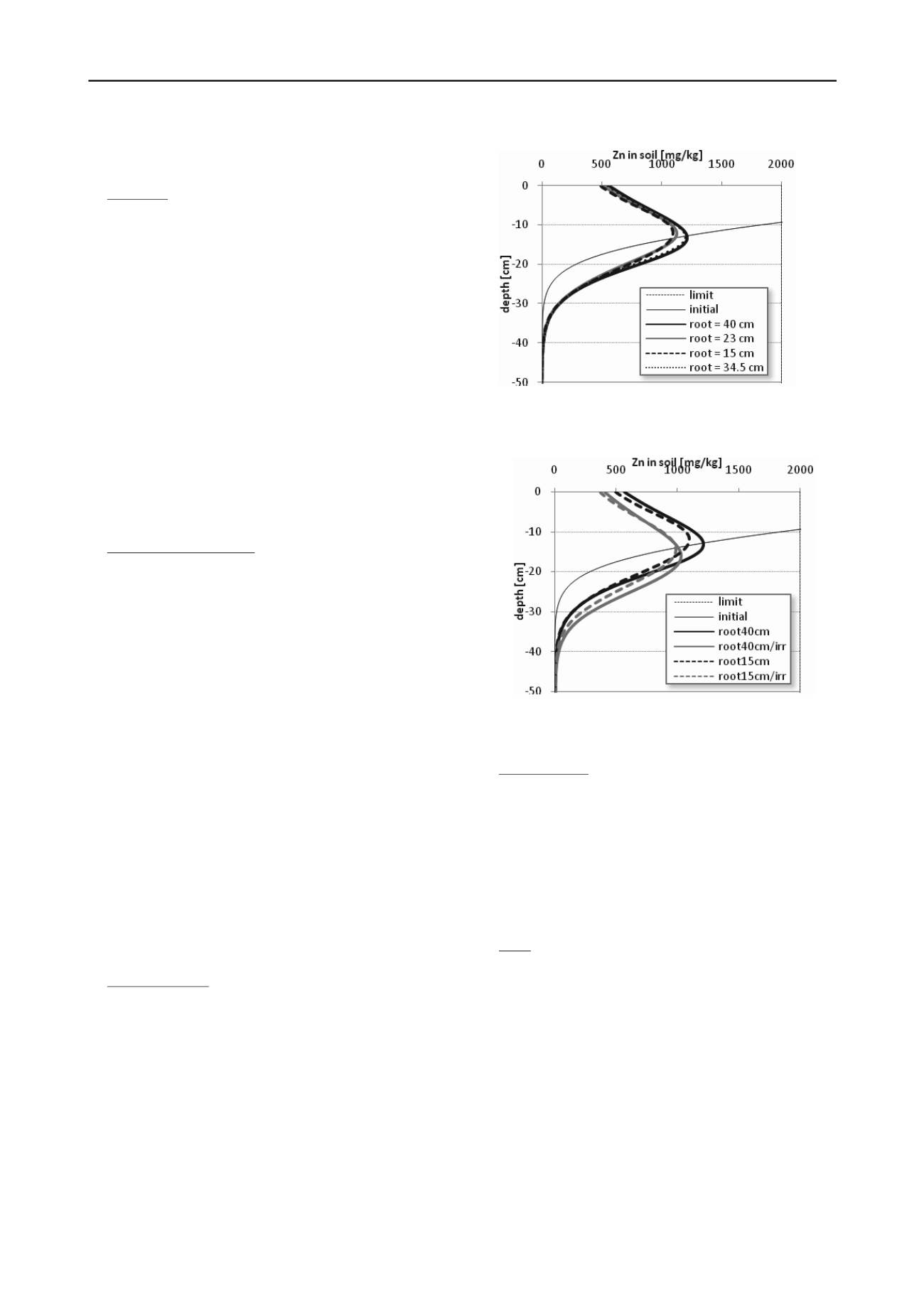
2994
Proceedings of the 18
th
International Conference on Soil Mechanics and Geotechnical Engineering, Paris 2013
carbonate in the samples indicating that a precipitation process
took place. Moreover, biological growth was observed
indicating the presence of microbial activity.
Courcelles
presents a study conducted on reactive filters for
use in Permeable Reactive Barriers (PRB) to treat contaminants.
One of the main geometric filter configurations consists in
constructing an upward vertical filtration in a reactive filter.
Crossing several meters of filter can generate excessive head
losses, modify the regional flow and lead to a bypass of the
system. A new radial-flow filter with a reduced filtration length
has been developed to minimize these head losses. Physical
tests have confirmed its hydraulic benefits since a reactive
material with a hydraulic conductivity of 2.10
-4
m/s after
clogging was found to reduce the head loss by a factor of 4.5
when subjected to a radial filtration instead of a conventional
vertical upward filtration. However, this result is strictly
dependent on the ratio between the hydraulic conductivities of
the coarse material and the reactive material. A minimum ratio
of 50 was necessary to ensure a pseudo-vertical flow. This
observation will improve the design of radial filters for tests at
the pilot scale. It was concluded that in general, the use of radial
hydraulic filter allows selection of the finest reactive materials,
which is advantageous in chemical terms and makes it easier to
meet the requirement for minimum ratio between the hydraulic
conductivities of the coarse material and the reactive material.
Umezaki and Kawamura describe a zero-emission system
to preserve the ecosystem in a closed water body such as a lake.
The system is based on three processes: a) dredging of the lake
bed soil; b) dehydration and purification to absorb nutrient salts;
c) consolidation to reduce the volume of the dredged material
after its return to the lake. Consolidation tests and column tests
for bed mud and lake water sampled in Lake Suwa, Japan were
conducted to simulate these processes. Natural zeolite powder
was used as the absorbent for purification. Consolidation tests
were carried out on the lake bed soil with natural zeolite powder
as absorbent, and column tests were conducted to monitor the
release inhibition of nutrient salts on the treated soil and lake
water. It was reported that by applying about 30 kPa of low
consolidation pressure, water contents approached the liquid
limit and the volume decreased to about two-thirds. In the
column test for bed mud with no treatment, total nitrogen (T-N),
total phosphorus (T-P), and chemical oxygen demand (COD)
surpass water quality standards for lakes in Japan. The release
of nutrient salts from bed mud was clearly recognizable and
algae developed in the water. To inhibit eutrophication,
dehydration under 30 kPa and purification using natural zeolite
powder was conducted; the contents of T-N and T-P were found
to meet water quality standards for lakes. T-N decreased
because of absorption of nitrogen by natural zeolite. Algae did
not grow. The release inhibition effect for nutrient salts of
natural
zeolite
was
proved.
However
additional
countermeasures against COD are still required.
Lugli and Mahler
describe an in-situ remediation technique
involving the uptake of contaminants by plant roots and their
subsequent accumulation in plant tissues. The technique is
referred to as Phyto-extraction. A numerical evaluation, using
Hydrus 1-D, was conducted to evaluate the effectiveness of
phytoremediation of Pb
2+
and Zn
2+
. The simulations considered
soil and climatological data representative of the coastal
lowlands of the municipality of Rio de Janeiro in Brazil and
were organized in three steps: pre-contamination (analysis of
the hydrological conditions), contamination (analysis of the
contamination plume before planting) and remediation. It was
indicated that, by modifying root depth and introducing
irrigation, the phyto-extraction process could be optimized for
contaminants characterized by low (e.g. Zn
2+
) (Figures 6 and 7),
and high (e.g. Pb
2+
) retardation factors.
Figure 6: Zn
2+
plumes: initial and after 10 years of remediation with
different root depth (Lugli and Mahler, 2013)
Figure 7: Zn
2+
plumes: initial and after 10 years of remediation with
different root depth and presence of irrigation (Lugli and Mahler, 2013)
Saadaoui et al.
describe a new soil remediation technique
using thermal in-situ desorption treatment (without excavation)
referred to as NSRCityTM. The technique is based on heating
the soil by conduction and extraction of the vapours of
hydrocarbons released due to the heating process. The technique
has already been used successfully on many urban and
industrial sites in Europe and the United States. This technique
was recently used in Belgium. The site contained a floating 0.5
m thick layer of hydrocarbons located at a depth of 3 m. A
spacing of 1.5 m between heating tubes, allowed the site to be
treated within 70 days.
Jones
describes the integration of geotechnical,
environmental and groundwater investigations for the Terminal
4 Project in Newcastle, Australia, aimed at identifying
appropriate remediation measures to protect human health and
environmental values. It discusses the various remediation
methods proposed for the safe development of the site. Methods
considered (see Fig. 8) include soil-bentonite cut off walls to
deal with tar waste, permeable reactive walls to tackle
asbestos/lead contaminants, multi-phase extraction (MPE) to
extract free-phase LNAPL contamination, followed by
monitored natural attenuation (MNA) for residual dissolved
phase hydrocarbon contamination and installation of a low-
permeability geosynthetic clay liner (GCL) over the site for
protection purposes. The Terminal 4 Project (Fig. 8) is expected
to improve the long-term environmental condition of a site
previously contaminated by industrial waste, while protecting
the surrounding sensitive environment.


